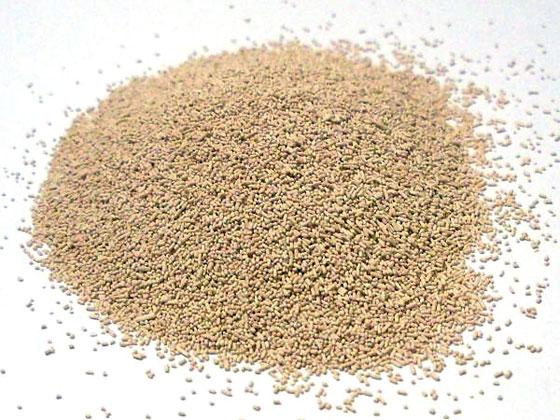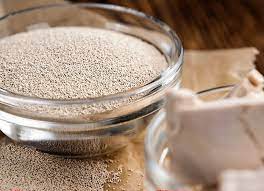The flavor enhancer glutamate is now less and less often found on the list of ingredients than it was a few years ago. It was replaced by yeast extract – but what exactly is that?
Is yeast extract made from yeast?
Although yeast extract is obtained from baker’s or brewer’s yeast, it is the concentrate of the soluble ingredients of yeast cells, i.e. the liquid of the yeast cells. During production, the so-called autolysis, the yeast cells are killed by heat: the yeast stops growing.
The yeast’s own enzymes split the proteins out of the yeast and partially dissolve them in the cell walls of the yeast cells. The smaller molecules from the yeast cells detach. The resulting cell juice is “washed” and concentrated.
At the end, yeast extract is left: either as a brown paste or as a yellowish-brown powder.
How does yeast extract taste?
Real fresh yeast tastes less spicy.
Yeast extract, on the other hand, has a strong, spicy taste reminiscent of broth made from boiled meat. This is also due to the fact that the natural amino acid glutamic acid is only released when the yeast is extracted. Free glutamic acid tastes hearty, spicy, meaty or “umami”, which is the fifth taste (besides sweet, sour, salty, bitter).
Free and bound glutamic acid also occurs naturally in protein-rich foods, for example in relatively high concentrations in parmesan, tomatoes or fish. And even our very first meal, breast milk, contains glutamic acid.
The percentage of glutamate in yeast extract is typically given as around 5 percent.
Incidentally, the British eat the extract pure on bread: as a spread called Marmite, a spicy paste. In Australia there is something similar under the name Vegemite, in the USA as Vegex and in Germany under the name Vitam-R (typically in health food stores).
Is yeast extract the same as glutamate?
The salts of glutamic acid are called glutamate. It has been repeatedly associated with Chinese restaurant syndrome in recent years and is said to stimulate the appetite. Although these effects have not been proven, the consumer advice centers advise against frequent consumption of the flavor enhancer. Glutamate is produced artificially, and genetically modified components can also be used. Yeast extract differs from the isolated flavor enhancer glutamate: in addition to around five to twelve percent glutamic acid, it also contains many other amino acids and is relatively rich in B vitamins and some minerals.
In contrast to glutamate, the extract does not count as a food additive on paper (although it is a substance that is added to foods) and therefore does not have to be labeled as a flavor enhancer by law (although it fulfills this function).
So the yeast extract is not the same as glutamate, although it also naturally contains glutamate (salts of glutamic acid) and also has a flavor-enhancing effect (otherwise you wouldn’t be using it).
Is extra yeast gluten free?
Yeast extract, when obtained from baker’s yeast, is gluten-free. However, the production of the extract from brewer’s yeast may contain very small amounts of gluten. In this case, however, the product must be labeled accordingly.
Is Yeast Extract Healthy?
While many people avoid glutamate because of its disrepute for its possible harmful effects on health, little is known about the health effects of yeast extract.
Since glutamate, or glutamic acid, is a natural component of so many foods we eat every day, it would be surprising if it were harmful to the body. In contrast to this naturally occurring form of glutamic acid, the flavor enhancer glutamate is an artificially produced additive. And whether this is actually harmful to health has not yet been clearly clarified. However, many consumers now reject it.
Yeast extract contains only a small proportion of glutamate (approx. 5%). It is therefore relatively unlikely that it will harm our health. Nonetheless, it is an industrially modified ingredient used to improve flavor.
